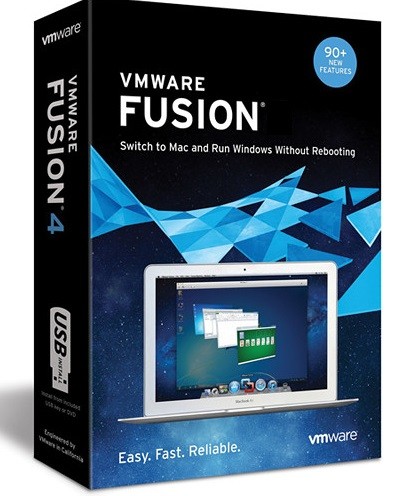

- VMWARE FUSION 11 FOR MAC OS X
- VMWARE FUSION 11 MAC OS X
- VMWARE FUSION 11 INSTALL
- VMWARE FUSION 11 UPDATE
- VMWARE FUSION 11 WINDOWS 10
Full 64‑bit compatibility with Mac OS X 10.6 host and guest. Maintenance release fixing Common Vulnerabilities and Exposures project () issue CVE-2010-4297. įixed security issues, accepts VMware Fusion 3 license keys. Fixed issues with NVidia graphics cards on Mac OS X 10.6. įixed issues when running on Snow Leopard.
VMWARE FUSION 11 FOR MAC OS X
Experimental support for Mac OS X 10.6 as guest. Adds experimental support for Snow Leopard Developer Builds. Import from Parallels, supports Mac OS X Server 10.5.6 host, mounts DMG images, supports Ubuntu 8.10 in Unity mode. Multiple Snapshots with AutoProtect, Improved Unity, DirectX 9.0 Shader Model 2 3D, and support for Mac OS X Server guests. Support for Time Machine and various bug fixes. Support for Leopard, Boot Camp, and improvements to DirectX support and Unity. Optional: nVidia GeForce 8600M, ATI Radeon HD 2600 or better graphics for Windows Aero support.Operating system installation media for virtual machines.macOS Catalina or later for VMware Fusion 12, Mac OS X 10.11 El Capitan or later for VMware Fusion 11, Mac OS X 10.9 Mavericks or later for VMware Fusion 8.5 GB free disk space for each virtual machine (10 GB or more recommended).Most Apple Macs launched in 2012 or later for VMware Fusion 12, most Macs launched in 2011 or later for VMware Fusion 11, any x86-64 capable Intel Mac for VMware Fusion 8.VMware Fusion can run any of hundreds of operating systems provided by the user, including many older versions of macOS, which gives users a way to run older Mac application software that can no longer be run under the current version of macOS, such as 32-bit apps and Rosetta ( PowerPC) apps. VMware Fusion 1.0 was released on August 6, 2007, exactly one year after being announced. Much of the underlying technology in VMware Fusion is inherited from other VMware products, such as VMware Workstation, allowing VMware Fusion to offer features such as 64-bit and SMP support. VMware Fusion uses Intel VT present in the Intel Core microarchitecture platform. That would’ve saved about 7 hours.VMware Fusion, which uses a combination of paravirtualization and hardware virtualization made possible by the Mac transition to Intel processors in 2006, marked VMware's first entry into Macintosh-based x86 virtualization. If I had to try it all again, I’d start with deleting all registry keys with vmware tools then rebooting Windows and manually running the installation wizard again. Too bad VMware support doesn’t offer a removal tool since many people wrestle with whacked VMWare Tools installations. It then prompted to restart Windows 10, and after that VMWare Tools was fine.ĭeleting “vmware tools” registry keys and maybe also deleting some vmware directories in Windows did the trick. But this time the Wizard completed - first removing then installing VMWare Tools. In D: somewhere (I don’t remember exactly) I double-clicked setup64.exe and the all-too-familiar installation Wizard appeared. In File Explorer, I could see a virtual DVD was mounted as D: and contained the VMWare Tools installer I’d labored with before. But after about 30 minutes that menu line was still gray with no other sign of progress.
VMWARE FUSION 11 INSTALL
– in registry, searching for vmware tools (with the option “Match whole string only” checked) and deleting each key containing that phrase.Īfter rebooting, Fusion’s “Virtual Machine” pull-down menu showed “Cancel reinstallation of VMWare Tools” (or maybe it was “Cancel updating VMWare Tools”), which showed Fusion was automatically trying to install VMWare Tools again.
VMWARE FUSION 11 WINDOWS 10
Some tech forums also recommended deleting specific registry keys buy my Windows 10 registry didn’t have them. Per some advice in tech forums, I trashed the vmware folders in Windows 10 (program files, including common files) but it didn’t help.

Lots of people have posted about this over the years. Neither reinstalling or removing worked (using the control panel uninstall or CCleaner): an error always appeared in the wizard and complained a file was missing in a temp folder that didn’t exist.

VMWARE FUSION 11 UPDATE
For over 12 months, Fusion’s VMWare Tools in a 64-bit Windows 10 Home vm wouldn’t update and I just left it alone since shared folders with macOS worked and so did other stuff.īut after updating to Fusion 11.5.6 and Windows 10 to v2004, I decided to fix VMWare Tools.


 0 kommentar(er)
0 kommentar(er)
